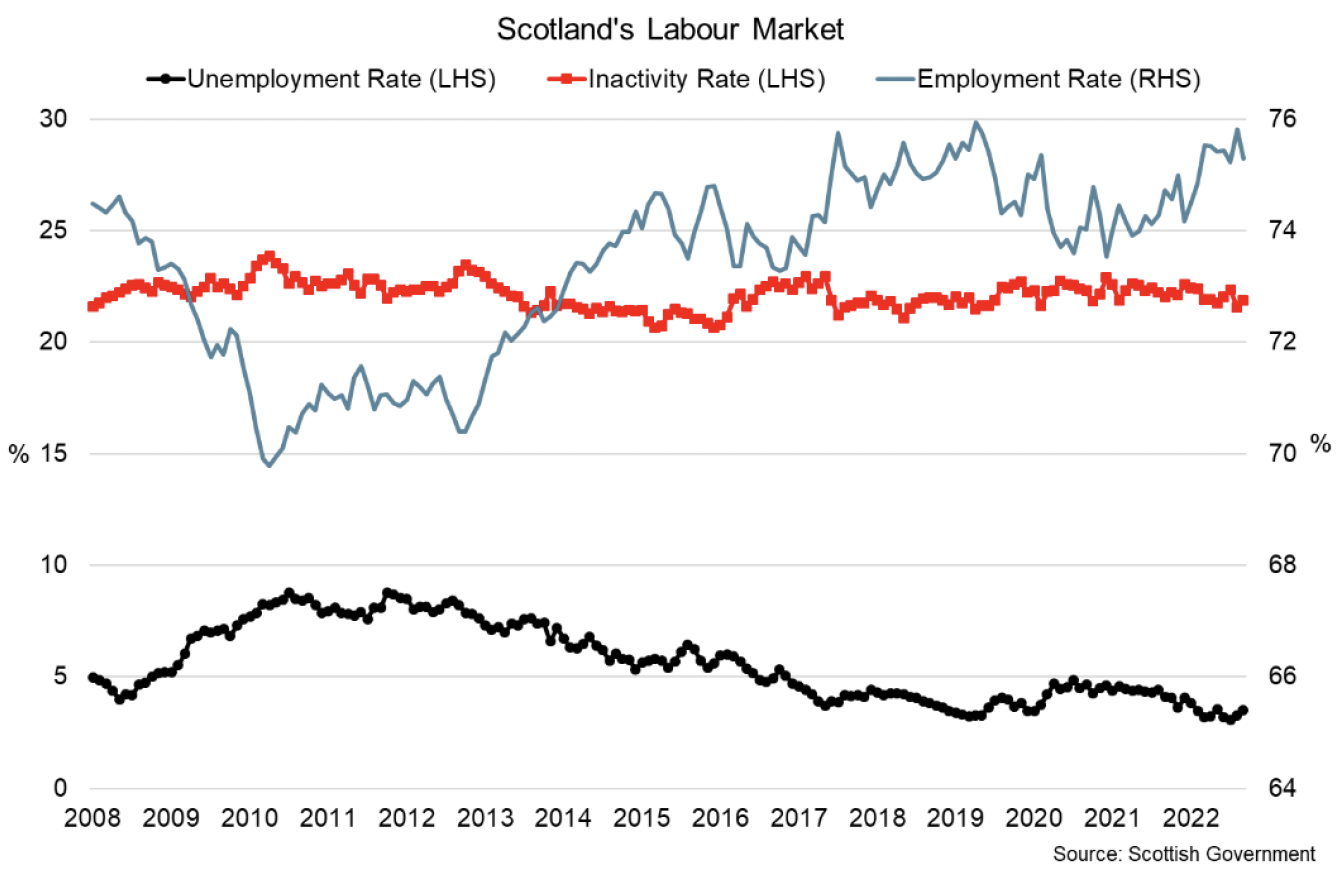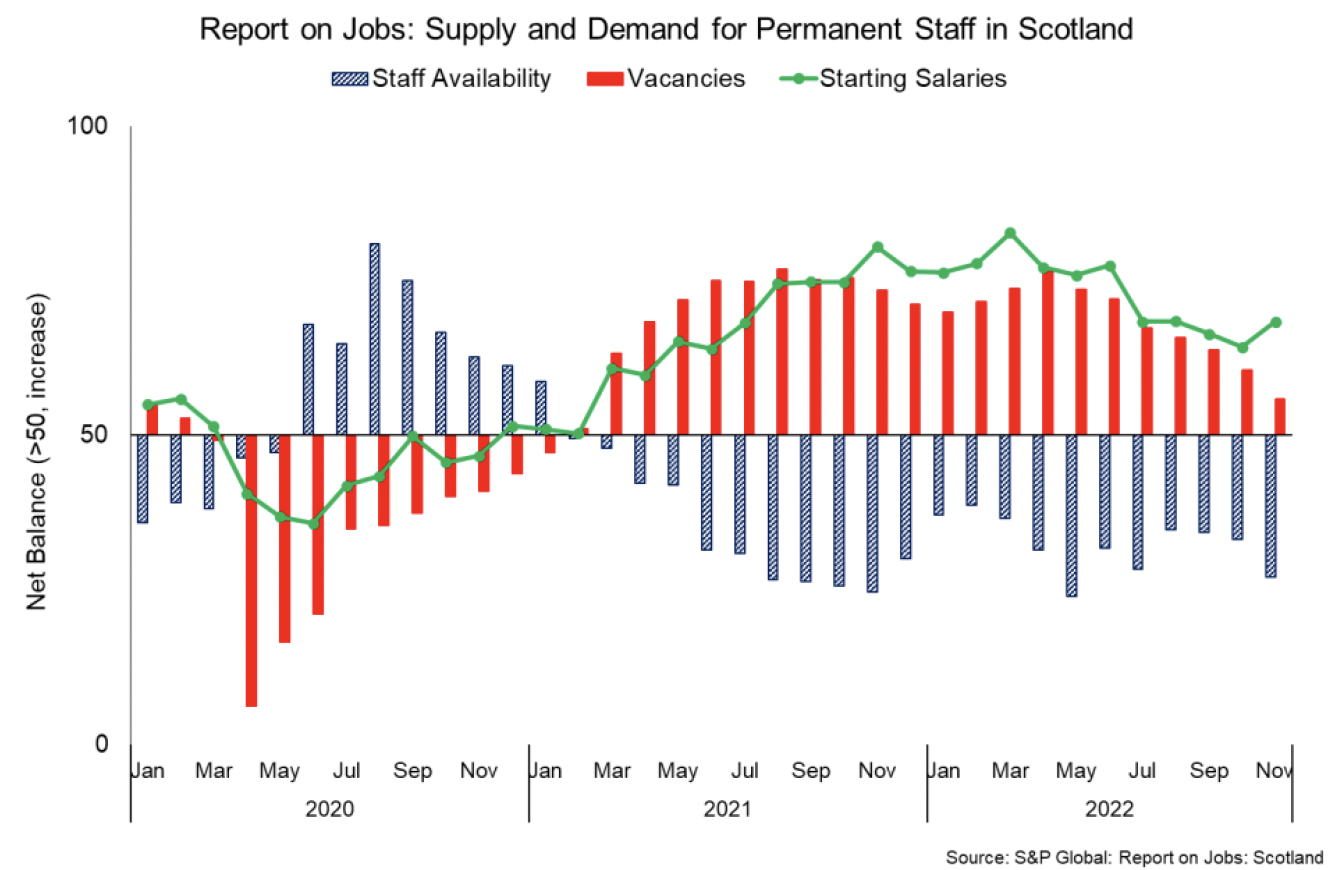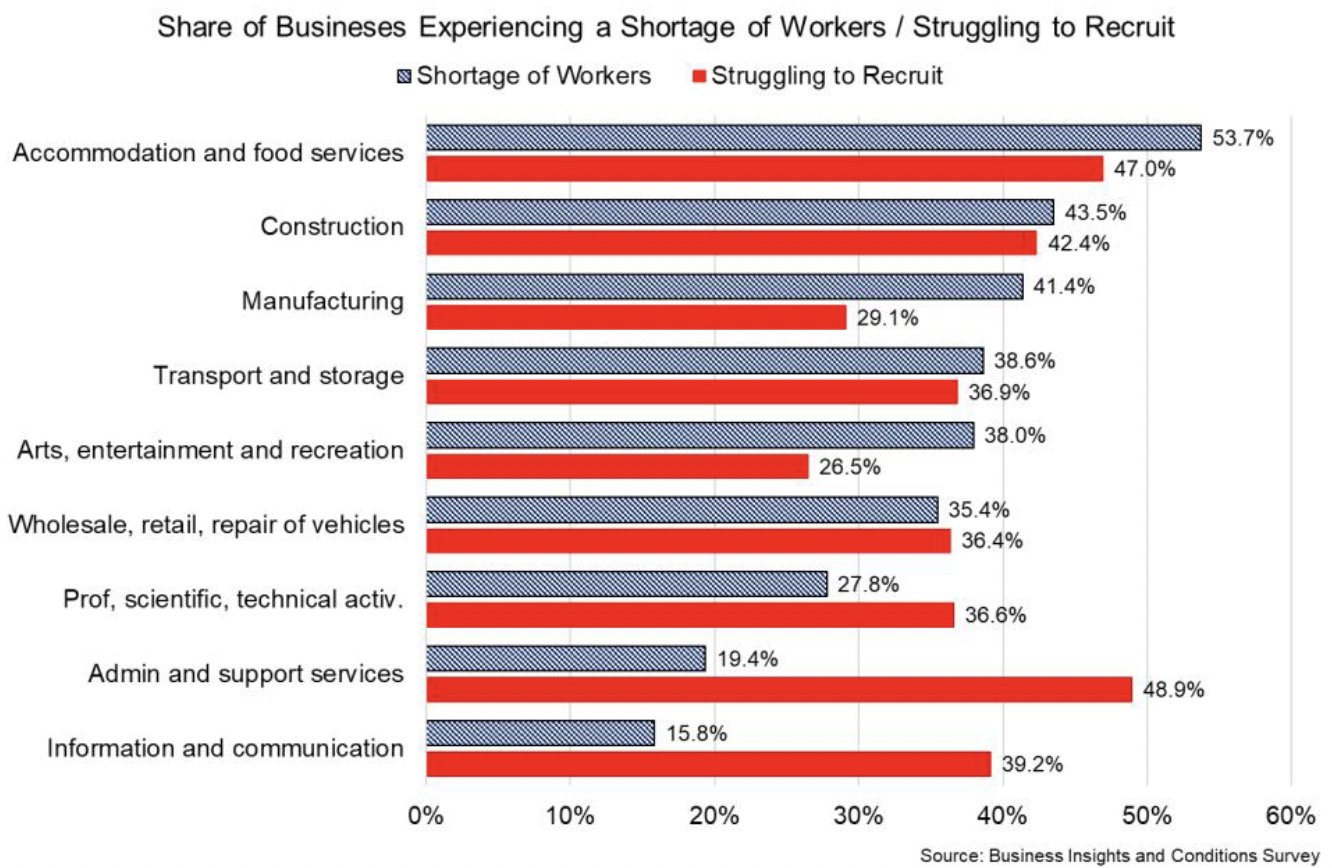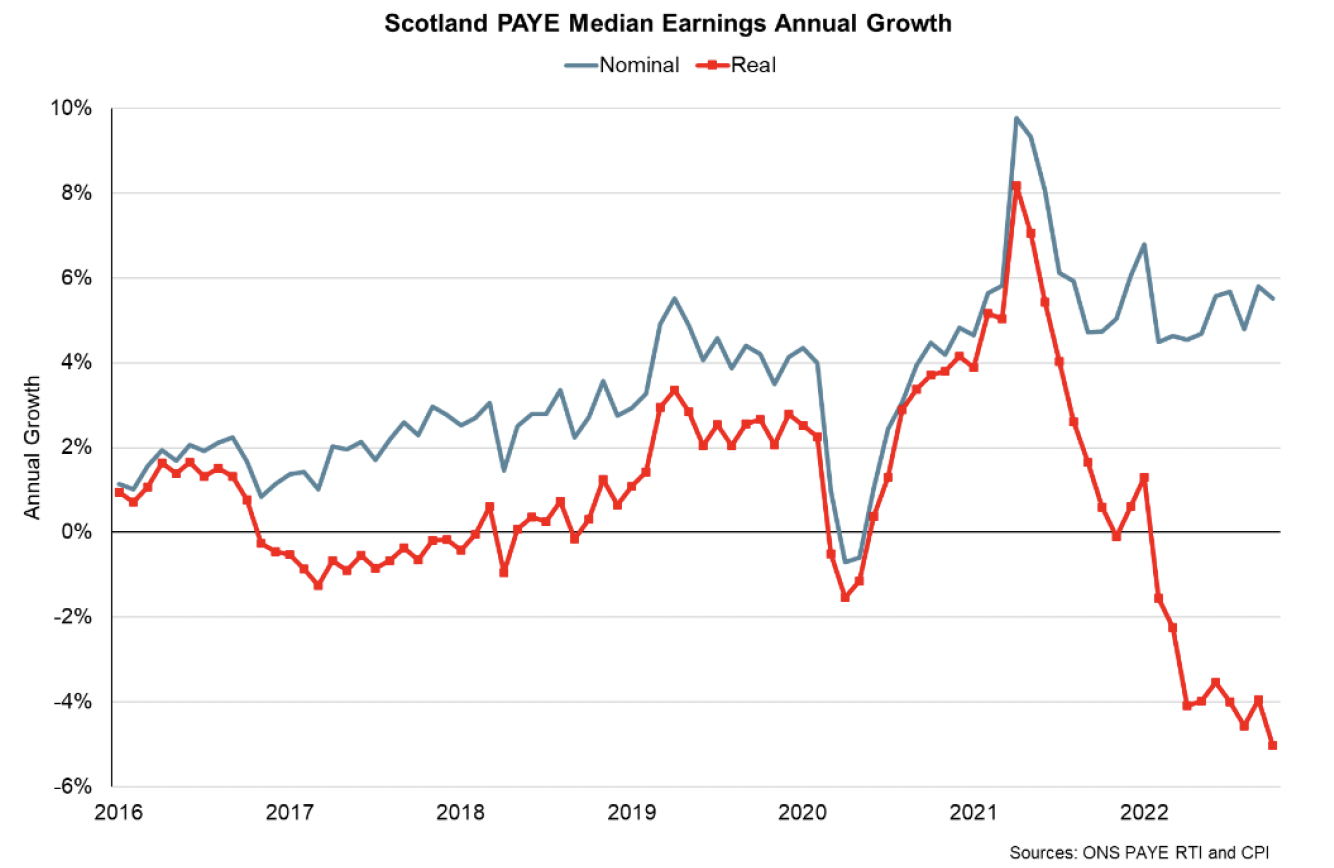Monthly economic brief: December 2022
The monthly economic brief provides a summary of latest key economic statistics, forecasts and analysis on the Scottish economy.
This document is part of a collection
Labour Market
The labour market remains tight, however inflation continues to outpace earnings growth.
Official labour market statistics
- The latest labour market statistics for July to September 2022 in Scotland show there were 2.7 million people in employment (rate of 75.3%, up 0.6 percentage points on the year), 98,000 people unemployed (rate of 3.5%, down 0.6 percentage points) and 753,000 people economically inactive (rate of 21.9%, down 0.2 percentage points).[9]

- Latest PAYE data signals further increase in employment in October with the number of PAYE employees rising 4,100 (0.2%) over the month and is 49,800 higher than in October last year.[10]
Demand and supply of staff
- Business surveys signal that labour market conditions have remained tight going into the final quarter of the year, however recruitment activity has slowed reflecting the uncertain economic outlook.
- The RBS Report on Jobs for November signalled that growth in demand for staff remained positive but continued to slow across both permanent (55.9) and temporary (57.1) vacancies to their lowest rates since the first quarter of 2021.[11]
- However, for businesses seeking to recruit, supply side challenges in the labour market have also continued with candidate availability (labour supply) falling and at an accelerated rate in November. Recruiters continue to cite underlying challenges of skill shortages and Brexit as factors constraining supply, alongside an increased hesitancy of labour market participants to seek out new roles due to rising economic uncertainty.

- The underlying tightness in the labour market continued to provide upward pressure to starting salaries in November which rose at elevated rates across permanent (68.4) and temporary (65.0) positions. The pace of growth picked up in November, however remained slower relative to the first half of the year.
- Labour shortages continue to affect a range of sectors with BICS data indicating 41.6% of businesses experienced a shortage of workers in September to October. The overall share has fallen from the end of August when it was 44.5%, however remains higher compared to earlier in the year and remains most notable in accommodation and food services (53.7%), construction (43.5%), and manufacturing (41.4%) sectors.[12]

- Furthermore, when asked about recruiting in October, 39% of all business reported experiencing difficulties recruiting employees. This is highest within admin and support services (48.9%), accommodation and food services (47%) and construction (42.4%). Earlier in the month, most businesses responded that a lack of qualified applicants (67.5%) and a low number of applications (58.5%) were reasons for why the business experienced difficulties in recruiting employees.
Earnings
- Nominal median monthly PAYE earnings grew 0.4% in October 2022 to £2,143. Over the past year to October, earnings have grown 5.5%, following the end of the furlough scheme in Septmber 2021.[13],[14]
- However, adjusting for inflation, which rose to 11.1% in October, real median earnings fell 5.0% on an annual basis, the ninth consecutive month of negative annual growth and the sharpest annual fall in the monthly timeseries during the current period of rising inflationary pressures.

- The sharp fall in real median earnings over the past year emphasises the cost of living challenges facing individuals and households.
Contact
Email: OCEABusiness@gov.scot
There is a problem
Thanks for your feedback